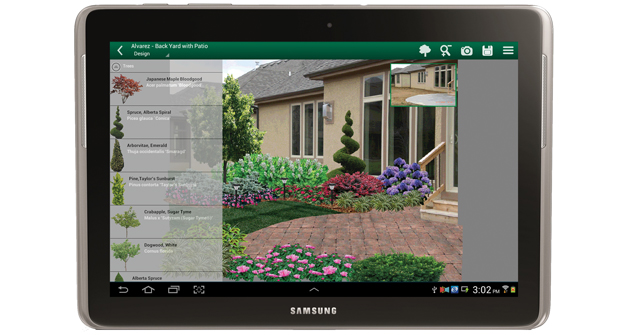
Advances in landscape design software provide contractors and professional designers with robust yet simple tools that improve project efficiency, inspire more creativity and ultimately increase client satisfaction.
Faster is better
In many facets of landscape design and construction, time is money. Clients demand projects be completed with expediency, and contractors juggle taking on and managing design/build challenges to maximize their workloads and improve their bottom lines.
“Today’s design software addresses many of these concerns and allows contractors to complete their project proposal up to five times faster than doing so without,” says David Sloan, sales manager at Drafix Software. “The same project, if done by hand and without software assistance, can take a designer four to five days to complete compared to just hours.”
Contractors not using design software are, in a sense, creating projects for clients with one arm tied behind their backs, Sloan says, adding that they ultimately lose out to pros who utilize these powerful yet simple-to-navigate digital tools.
“Design software makes you that much more efficient because it cuts your time without impacting your ability to be creative and to get more designing done for clients,” Sloan adds.
Material management
Advances in design software address the task of maintaining a count of the elements — such as plants, shrubs and trees, water features, lighting and hardscapes — incorporated into a landscape. This is critical from a design perspective and vital to accurately estimating a project.
“Previously, general CAD (computer-aided design) software was not landscape specific,” says Eric Gilbey, PLA, product market manager for landscape industries at Vectorworks. “Now, designers have tools that will self-count and self-quantify, which are immensely useful and save time throughout the design process. This feature could save up to a day of design labor by eliminating the need to manually do plant counts and quantify accurately the materials for a project’s softscapes and hardscapes.”
And this feature makes smaller companies that don’t have the resources of a large design team more competitive in their markets.
“Once the initial drawing is set, a contractor can configure out the number of plants and edging and the type of mulch all from a single, base drawing and then track those elements as the project evolves,” Sloan says. “Then (the software) recalculates material totals added or subtracted from the project and provides up-to-date and accurate costs.”
Envision the vision
Landscape-specific design software creates a virtual environment for designers and their clients to experience, in real time, how changes will look without continuously redrawing paper-based plans.
“This allows a contractor to give their clients multiple options, impressions and interpretations for what a (finished) project could look like,” Gilbey says. “It’s also essential in reducing design errors, which is very important when a contractor may be involved in competitive bidding (for a project).”
In addition, innovative software frees the designer to take on jobs of all shapes, sizes and complexities. Consider a small job like redoing a landscape bed or making modest improvements to an existing residential or commercial environment.
“(The designer) can go to the site, take a couple of pictures, tap in some plants, and have the design done and ready to install the next day,” Sloan says.
Lastly, much of this software is available in a mobile format, allowing contractors to maximize on-site time and minimize their workload.
“Software addresses many problems contractors and designers have struggled with for years,” Sloan says. “However, now, software converts artistic vision into reality faster and more efficiently while providing clients with greater input and feedback in producing a beautiful outdoor environment.”

